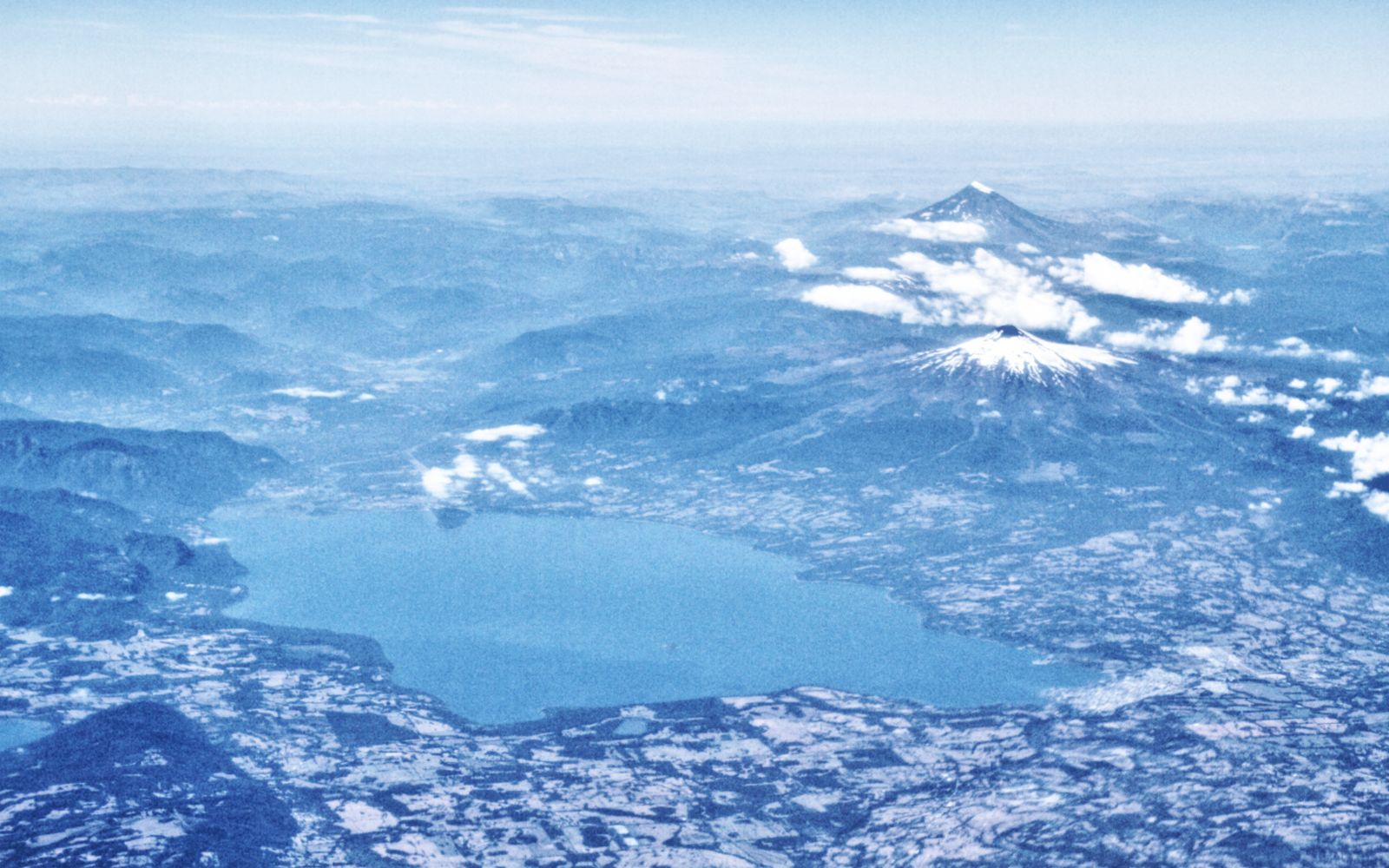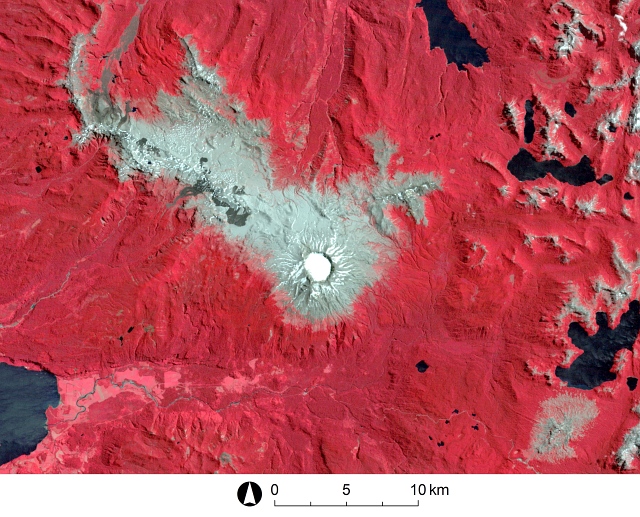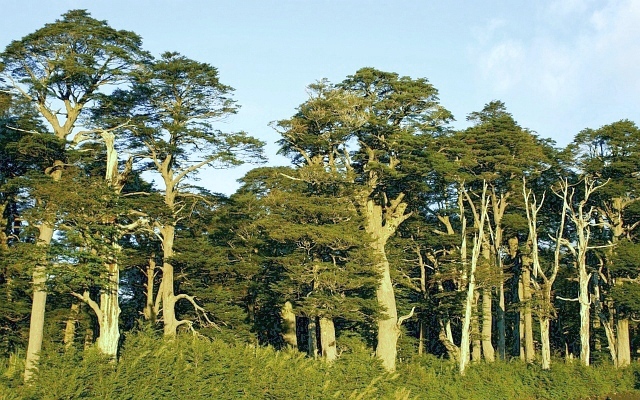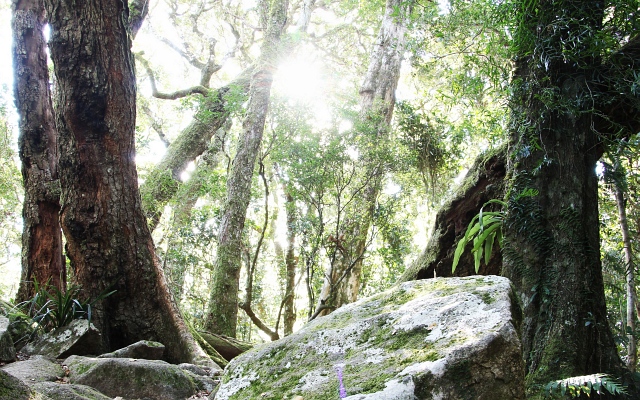Strongly generalized and distorted sketch. Araucaria araucana only occurs in the northern, Fitzroya cupressoides only in the southern portion of the area shown in the profile.

The Andes between approx. 600 km and 1000 km south of Santiago de Chile are among the most active volcanic zones worldwide. Stratovolcanoes such as the Llaima, the Villarrica, the Puyehue, or the Calbuco were the scenes of various explosive eruptions in the early 21st Century. But this area is also highly remarkable from an ecological point of view: two ancient species of conifers, with close relatives reaching far back into the geological history, can be found in the forests of the Little South as well as several species of southern beech and further plants belonging to a very special flora.
Click on the red symbols to learn more about the individual points of interest.

From which direction does the wind blow here? Click into the profile graph to learn about the answer. Compare also the contribution on the climate and vegetation of the Eastern Cordillera, considering an area almost 2000 km farther north.

The Little South from the air


Click on the arrows or into the photograph to view the lakes and volcanoes from different perspectives.
These aerial views show the characteristic landscape at the western rim of the Andes approx. 700 km south of Santiago de Chile: whereas the numerous large lakes - filling basins scoured by the Pleistocenic glaciers - are bordered by farmland, the stratovolcanoes such as Lanín and Villarrica rise high above the forested hills.
All the photos were taken during a regular flight from Puerto Montt to Santiago de Chile on 28 February 2018.






















